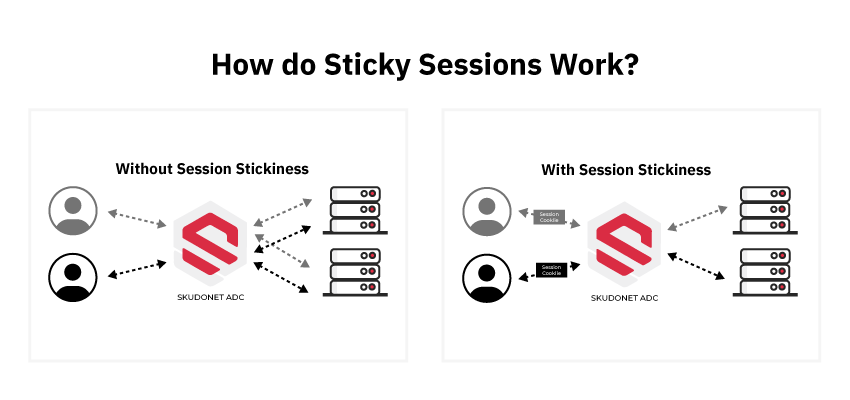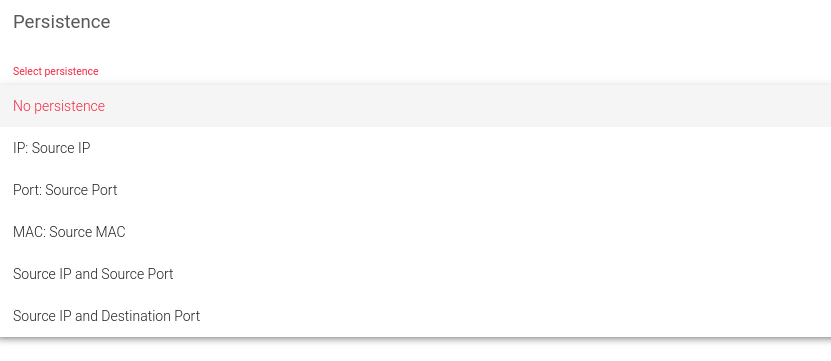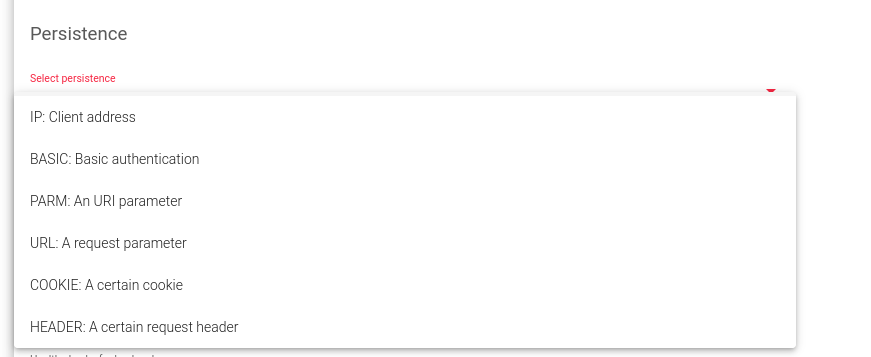Sticky sessions play a vital role in managing user sessions and optimizing web application performance. This article provides an overview of sticky sessions load balancer, including its definition and functionality.
It also covers popular load balancing services like Amazon Web Services (AWS) and their implementation of sticky sessions. Additionally, the article explores the importance of configuration and how SKUDONET ADC handles sticky sessions and session persistence. Stay tuned to gain a comprehensive understanding of sticky sessions and their benefits in load balancing.
Contents
Understanding Sticky Sessions
What are sticky sessions?
Sticky sessions, also known as session persistence, are a crucial aspect of load balancing for web applications. They ensure that user sessions are maintained consistently throughout their interaction with the application. In other words, once a user is directed to a specific server, all subsequent requests from that user are routed to the same server. It ensures a seamless and personalized experience for every single user.
Sticky sessions work by associating a user’s session with a specific server. When the load balancer receives a user’s request, it determines which server to route the request to based on predefined criteria, such as a custom application cookie or a load balancer-generated cookie. The load balancer then maintains this association for the duration of the user’s session.
How do sticky sessions work?
To understand how sticky sessions work, let’s consider a scenario where a user accesses a web application that utilizes a load balancer with sticky session functionality. When the user sends the first request, the load balancer checks for an existing session cookie. If no session cookie is found, the load balancer directs the request to a server based on its predefined algorithm.
Once the server processes the request and generates a response, it includes a session cookie in the response. This cookie contains information that identifies the server associated with the user’s session. For subsequent requests from the same user, the browser automatically includes this session cookie, allowing the load balancer to route the requests to the appropriate server.
This process ensures that user sessions remain persistent, facilitating features such as maintaining shopping carts, preserving user preferences, or enabling secure logins without requiring users to authenticate for each request.
In conclusion, sticky sessions enable load balancers to remember user sessions and direct subsequent requests to the same server. This ensures a consistent user experience by preserving session data and personalized settings. Now that we have a clear understanding of what sticky sessions are and how they work, let’s explore their management with load balancers in the next section.
Managing Sticky Sessions with Load Balancers
In order to optimize web application performance, effective management of sticky sessions is crucial. This section explores how load balancers handle sticky sessions and examine specific approaches taken by leading providers such as Amazon Web Services (AWS).
Sticky Sessions Load Balancer
A sticky sessions load balancer plays a critical role in maintaining session persistence for web applications. By remembering user preferences and routing requests to the same server, it ensures a seamless and consistent experience. Load balancers, such as SKUDONET ADC, effectively handle sticky sessions by allowing for customizable criteria and flexible routing algorithms.
Amazon Web Services (AWS) Sticky Sessions
Amazon Web Services (AWS) offers a range of load balancing services that include sticky session functionality. The Application Load Balancer (ALB) and Network Load Balancer (NLB) are popular choices. ALB provides application-based stickiness, enabling the load balancer to route requests based on custom application cookies. On the other hand, NLB supports duration-based stickiness, where load balancer-generated cookies map sessions to specific targets.
Application Load Balancer (ALB) Sticky Sessions
Application Load Balancer (ALB) employs sticky sessions based on custom application cookies. The load balancer routes the initial request to a target within the group using a specific algorithm. The target sets a custom application cookie that matches the cookie configured on the load balancer, allowing for session stickiness. This approach enables tailored session management by including required cookie attributes.
Network Load Balancer (NLB) Sticky Sessions
Network Load Balancer (NLB) utilizes duration-based stickiness to route requests consistently to the same target. Load balancer-generated cookies, such as AWSALB, map sessions to specific targets within the target group. This approach is particularly useful for applications lacking their session cookies, as it allows for efficient routing of user requests.
Ready to test SKUDONET?
Request your free 30-day trial fully functional version
and discover all functionalities of our Enterprise Load Balancer.
How does SKUDONET ADC deal with Sticky Sessions?
SKUDONET ADC controls how the HTTP service manages client sessions and which HTTP connections are used to maintain secure client sessions. When you select a persistence session type, you will be shown its Time To Live (TTL) in seconds.
Note that persistence is also supported in the Community Edition, with the exception of cookie insertion persistence.
We can talk about session persistence by reading existing data or session persistence through mechanisms that the load balancer introduces. Let’s see an example, session persistence by cookie inserted by the balancer. This mechanism is useful when the backend does not implement session cookies and when other persistence alternatives such as persistence by IP or by header cannot be used.
It can NOT be used behind the same IP because there are many clients and all of them would go to the same machine throwing it away. For example a NAT or CGNAT navigation (internet service providers like Verizon, DIGI, etc) or by header, when the application has been developed and does not include any mechanism to persist.
You can read more about how to properly configure SKUDONET ADC in our official documentation about persistence in lslb-farms.
In conclusion, effective management of sticky sessions with load balancers is vital for optimizing web application performance. Sticky session load balancers, including SKUDONET ADC, provide customizable approaches for session persistence. Providers like Amazon Web Services offer specific solutions, such as ALB and NLB, catering to different application requirements and scenarios.
Implementation and Configuration
Configuring Sticky Sessions in SKUDONET ADC
Persistence session for HTTP profiles
Including persistence session by SKUDONET (Cookie Insertion)
Persistence session for L4XNAT profiles:
The profiles work in different layers in the OSI model so the information used for implementing the Persistence is different, HTTP(S) profile works in Layer 7 so it uses information from Application protocol but L4XNAT works in Layer 4 which uses information from Transport Layer protocol.
In order to implement this, the load balancer needs to be properly configured. This involves defining the criteria for session stickiness and setting the expiration period for cookies. By specifying the appropriate parameters, you can ensure that user sessions are effectively managed and routed to the same server for a specific duration.
Enabling Session Persistence
Enabling session persistence is a crucial step in leveraging sticky sessions. By doing so, the load balancer generates cookies for each user session, mapping them to specific servers. This ensures that subsequent requests from the same user are consistently directed to the same server, maintaining session continuity and enhancing the user experience.
Use Cases and Advantages with SKUDONET ADC
SKUDONET ADC presents a reliable solution for implementing and managing sticky sessions. With its robust functionality, allows for seamless configuration of sticky sessions, enabling session persistence and optimizing web application performance. Some of the key advantages of using SKUDONET ADC for sticky sessions include:
- Improved user experience by maintaining session continuity
- Optimized performance through efficient load balancing
- Enhanced security by ensuring sensitive user data remains on specific servers
- Scalability to handle increased traffic and user sessions
By leveraging SKUDONET ADC’s capabilities, organizations can effectively manage and configure sticky sessions, providing a seamless and consistent user experience for their web applications.






